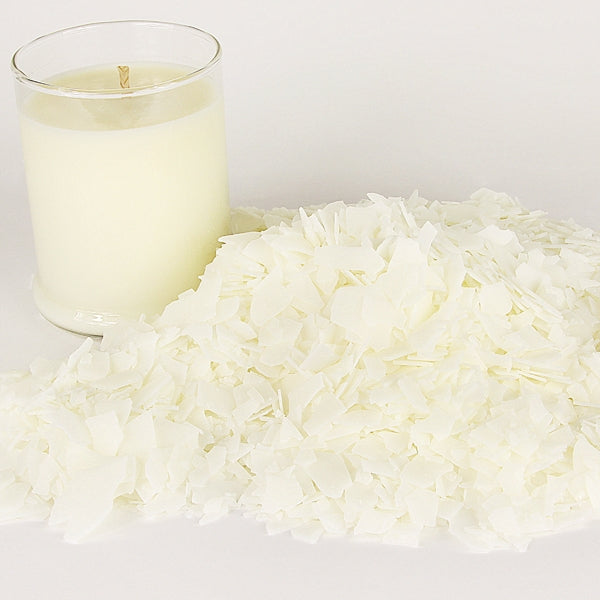Elevate Your Space with Costs Soy Wax Candles and Home Fragrance
Elevate Your Space with Costs Soy Wax Candles and Home Fragrance
Blog Article
From Wick to Wax: Comprehending the Chemistry Behind Soy Wax Candles and Their Ecological Effect
As we illuminate our spaces with the cozy glow of candles, there exists a world of intricate chemistry behind the seemingly easy act of lighting a soy wax candle. Join us as we unravel the scientific intricacies behind soy wax candles and explore their ramifications on our atmosphere.
Soy Wax Vs. Paraffin Wax
When contrasting soy wax and paraffin wax for candle production, it is important to understand the distinctive qualities and benefits of each product. Soy wax is a natural, renewable resource originated from soybean oil, making it eco-friendly and biodegradable - home fragrance. In contrast, paraffin wax is a by-product of oil refining, which increases problems about its environmental effect and sustainability
Soy wax candle lights shed cleaner and release much less soot compared to paraffin wax candle lights, making them a healthier selection for interior air top quality. In addition, soy wax has a lower melting factor, permitting a longer-lasting candle light that spreads scent more efficiently. Paraffin wax, on the other hand, often tends to burn faster and much less easily, potentially launching hazardous chemicals right into the air.
From a sustainability point of view, soy wax is favored for its biodegradability and sustainable sourcing, aligning with the growing customer choice for environmentally mindful products. While paraffin wax has actually been a traditional selection in candle light making as a result of its price and simplicity of use, the shift towards environment-friendly options like soy wax is gaining energy in the sector.
Chemical Make-up of Soy Wax

Combustion Process in Soy Candles
The chemical composition of soy wax straight influences the combustion process in soy candles, impacting aspects such as shed time, fragrance release, and ecological influence. When a soy candle light is lit, the heat from the fire thaws the wax near the wick.
The combustion efficiency of soy candle lights is influenced by the purity of the soy wax and the quality of the wick. A clean-burning soy candle light with a correctly sized wick will certainly reduce and produce a constant fire soot formation. This not only expands the melt time of the candle however also boosts the release of fragrances. Furthermore, soy wax candle lights have a reduced ecological influence click for more contrasted to paraffin candles because of their eco-friendly and naturally degradable nature.

Environmental Benefits of Soy Wax

Taken into consideration a lasting choice to standard paraffin wax, soy wax offers remarkable environmental advantages that make it a popular choice amongst eco-conscious consumers. One considerable benefit of soy wax is its eco-friendly sourcing. Soy wax is originated from soybean oil, which is predominantly grown in the United States. The cultivation of soybeans helps sustain local farmers and lowers the dependence on non-renewable nonrenewable fuel sources utilized in paraffin wax production. In addition, soy wax is naturally degradable, indicating it breaks down naturally without releasing damaging toxins right into the environment. This particular makes soy wax candles a more eco-friendly option contrasted to paraffin wax candle lights, which are made from petroleum, a non-renewable resource. Soy wax burns cleaner and generates less soot than paraffin wax, contributing to far better indoor air quality and decreasing the need for cleansing and maintenance. On the whole, the ecological benefits of soy wax straighten with the expanding demand for environment-friendly and sustainable items on the market.
Recycling and Disposal Factors To Consider
Recycling and appropriate disposal of soy wax candles play a vital function in preserving ecological sustainability and lowering waste in homes and communities. The first action is to make certain that the candle has actually burned completely when it comes to reusing soy wax candle lights. This can be attained by allowing the candle to melt up until the wick is no longer usable, and then allowing the staying wax cool and solidify. As soon as the wax has solidified, it can be very carefully gotten rid of from the container.

In terms of disposal, if recycling is not an alternative, soy wax candle lights are eco-friendly and can be safely taken care of in most household waste systems. It is constantly recommended to inspect with neighborhood recycling facilities or waste management services for certain standards on candle light disposal to make certain appropriate handling and environmental protection.
Conclusion
Finally, the chemistry behind soy wax candle lights discloses their environmental advantages over paraffin wax candle lights. Soy wax, acquired from soybean oil, burns cleaner and generates much less soot when contrasted to paraffin wax. The burning procedure in soy candle lights is a lot more reliable, resulting in a much longer and much more even melt. Additionally, soy wax is sustainable and biodegradable, making it a much more sustainable choice for candle manufacturing. Reusing and appropriate disposal of soy wax candle lights YOURURL.com additionally add to their environmental effect.
When comparing soy wax and paraffin wax for candle light making, it is essential to recognize the distinct qualities and advantages of each material (soy candles).Soy wax candles shed go cleaner and release much less residue compared to paraffin wax candle lights, making them a much healthier selection for interior air high quality.Considered a sustainable choice to conventional paraffin wax, soy wax provides noteworthy ecological benefits that make it a preferred option amongst eco-conscious consumers. Soy wax burns cleaner and creates much less residue than paraffin wax, adding to far better indoor air quality and reducing the requirement for cleansing and maintenance.In verdict, the chemistry behind soy wax candle lights exposes their ecological advantages over paraffin wax candle lights
Report this page